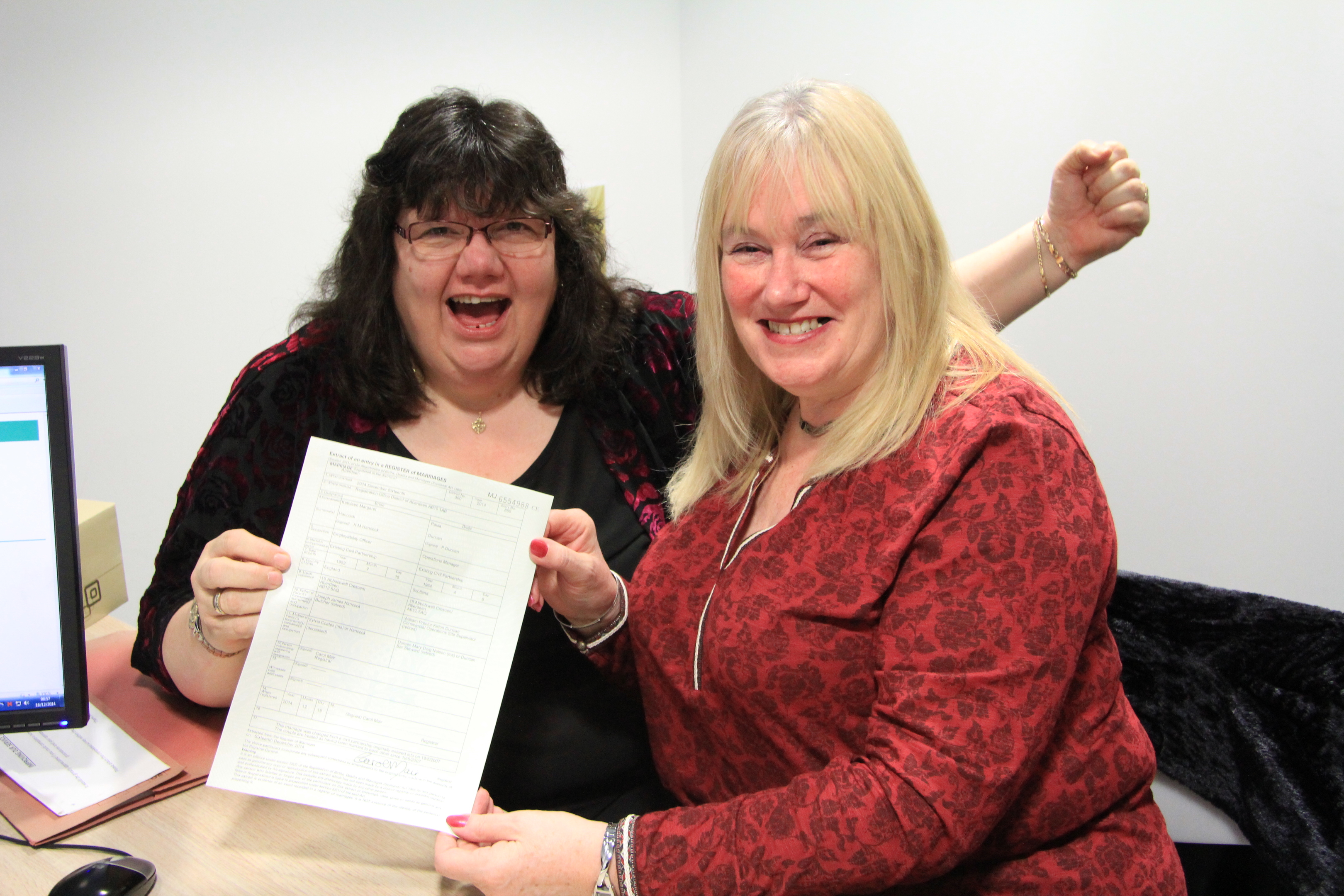Eighteen years ago, Kathleen Hancock and Paula Duncan fell in love.
It was the last thing either of them expected, as Kathleen had been married before and had three daughters.
But their chance meeting at work was to set the pair on a journey together that has lasted almost two decades.
Seven years ago the couple, from Aberdeen, were able to affirm their relationship with a civil partnership.
But although the service was beautiful, although their families were there to celebrate their love and although it felt like the real thing, the couple always longed for the day they could marry and be equal to everyone else.
Yesterday morning at exactly 8.30am, the pair arrived at the registrars at Aberdeen City Council’s Marischal College to convert their civil partnership into a marriage.
They were the first couple in the north-east to have their marriage legalised thanks to a historic change in Scottish law.
They even asked the woman who conducted their civil ceremony seven years ago to oversee their marriage – a request she happily obliged with.
With the help of the witnesses who were at their original ceremony – Kathleen’s youngest daughter and Paula’s sister-in-law – the couple signed the important piece of paperwork that officially binds them as wife and wife.
“This means we’re equal to everyone else now,” said Mrs Hancock, who is 62.
“For eighteen years Paula has been my partner – but that could mean anything. It could mean she’s my business partner.
“Now I can legally call her my wife, and it is fantastic.”
The new law means their marriage is even backdated to the date they conducted their civil ceremony, which means they have technically been married for seven years.
“I’ve always felt like it didn’t seem fair that we couldn’t be married,” said Mrs Hancock.
“There are still people out there who are afraid to come out to their work colleagues, to their families.
“But we are all just ordinary people who fall in love – we are no different to anyone else.”
Mrs Duncan, 50, said it felt no different calling each other their wives as they had always felt that way.
“For years, it’s been difficult filling in forms – you either have to be married, single or divorced,” she said.
“But now we can tick the right box.”
